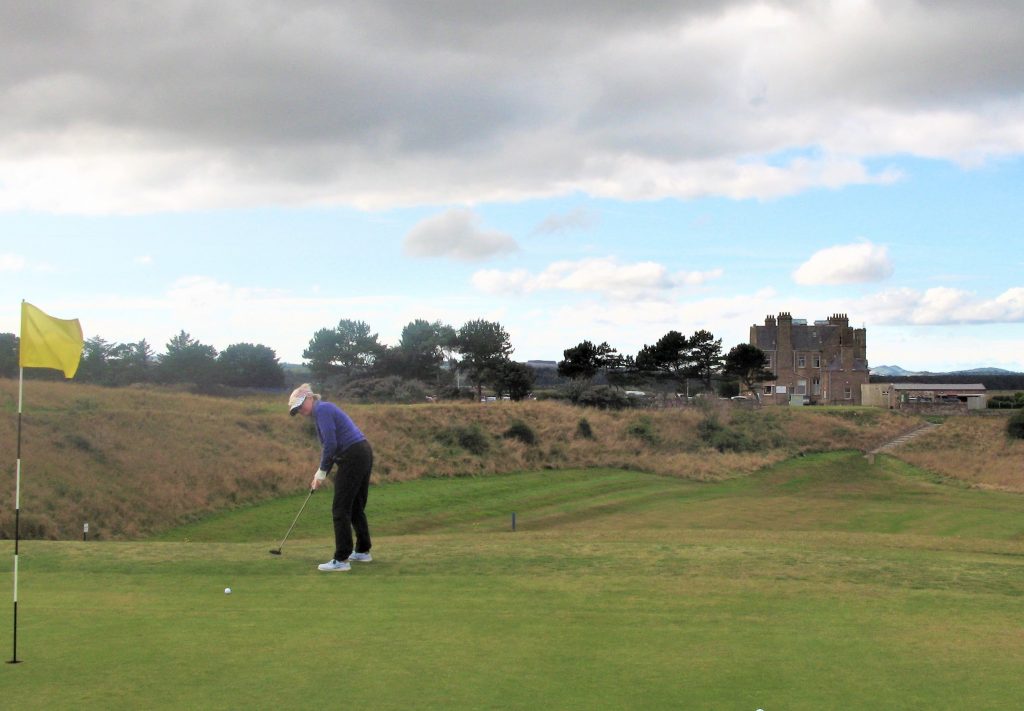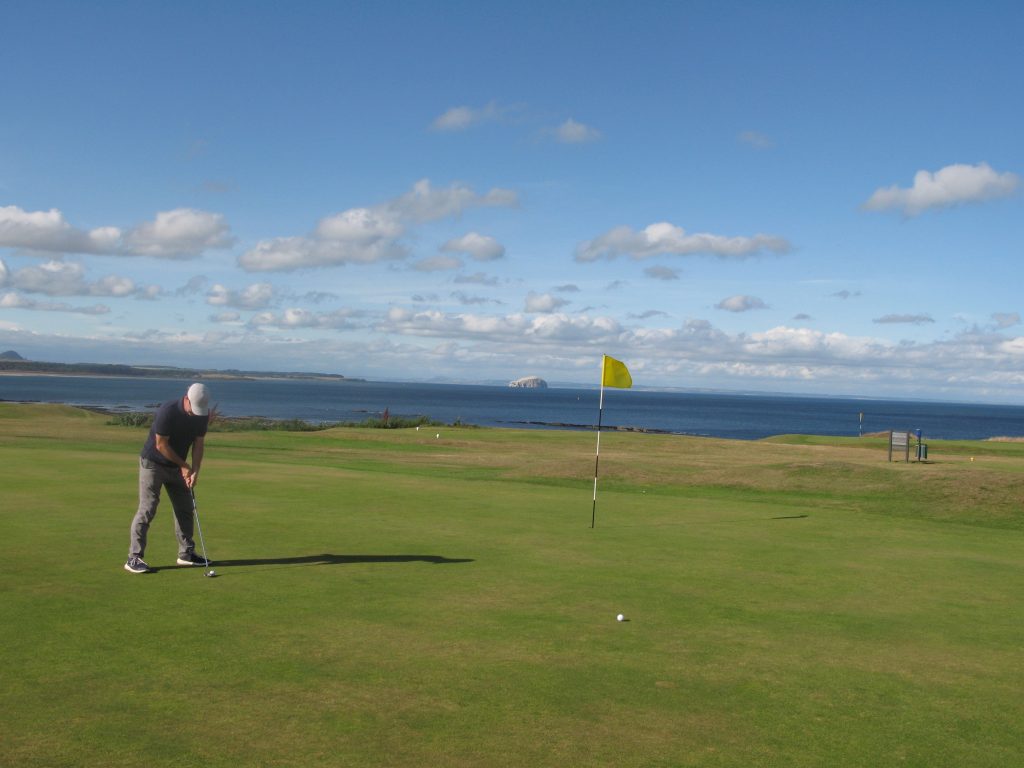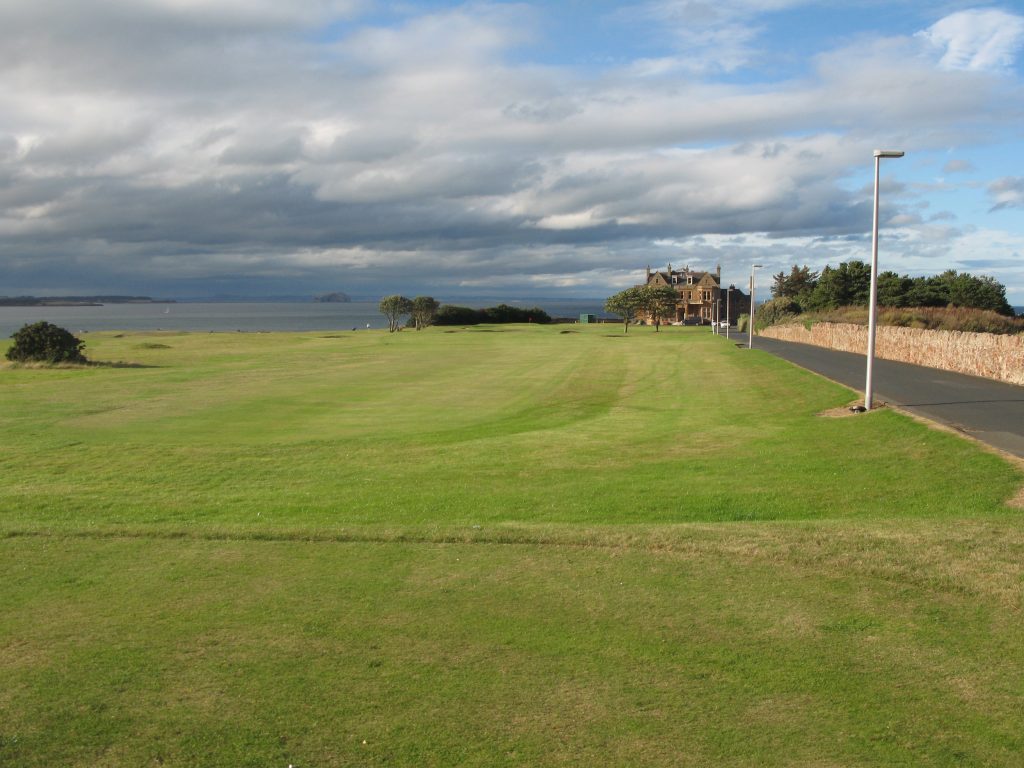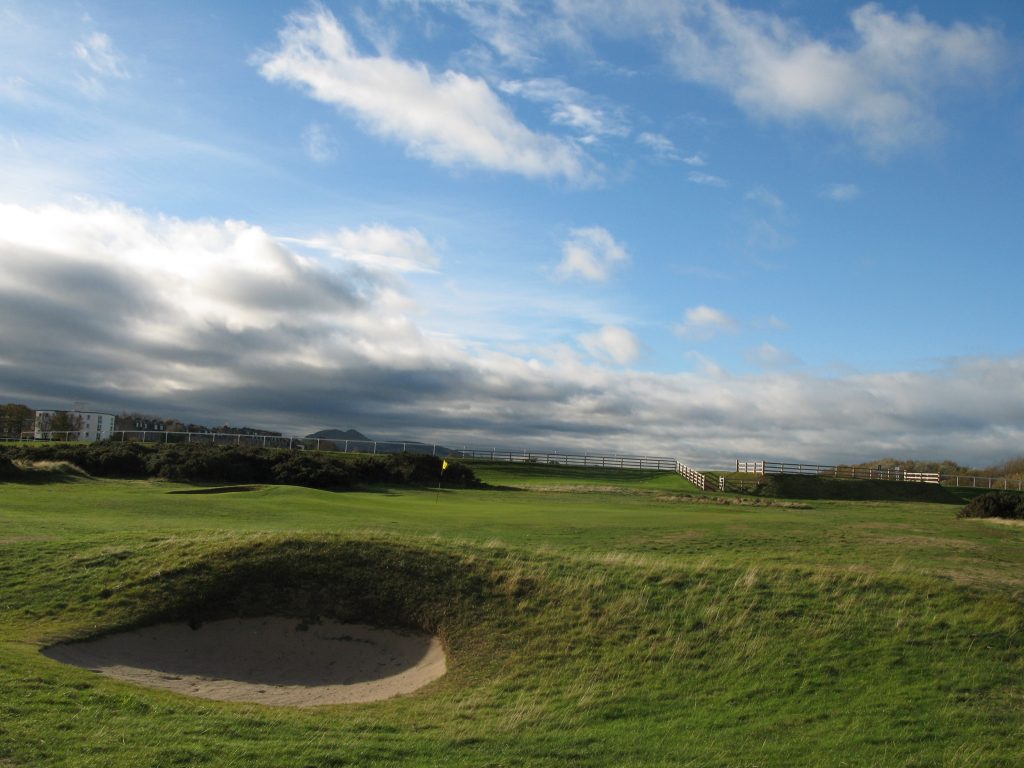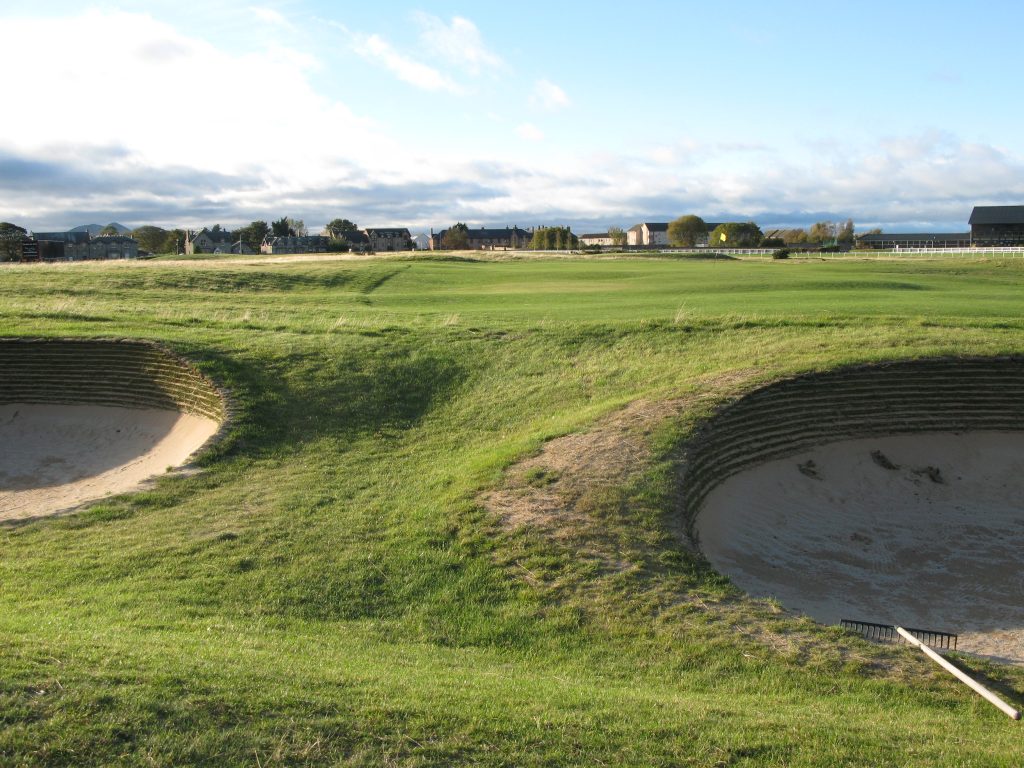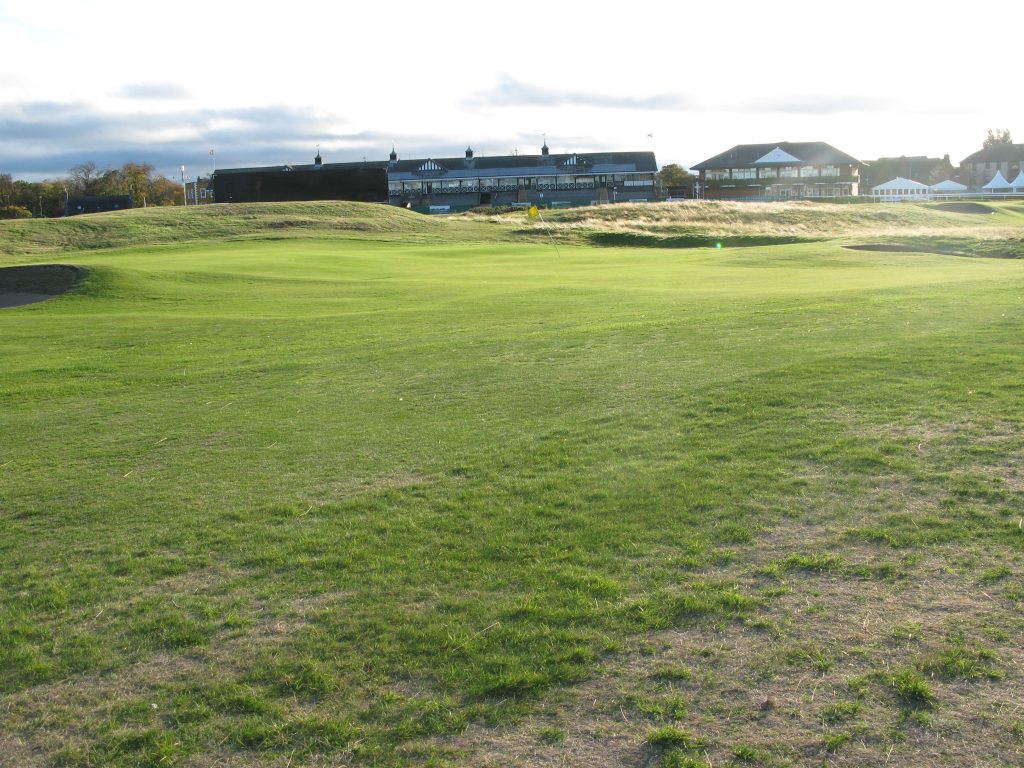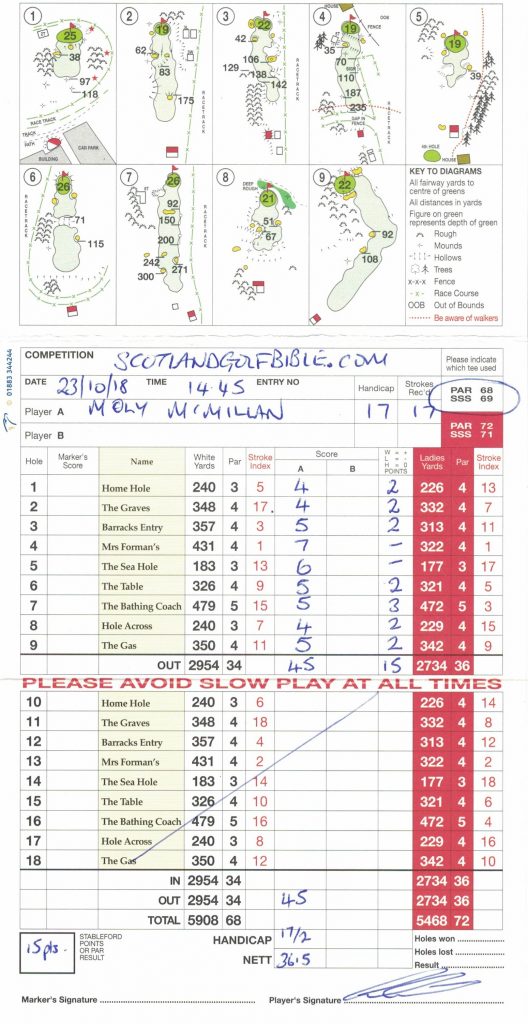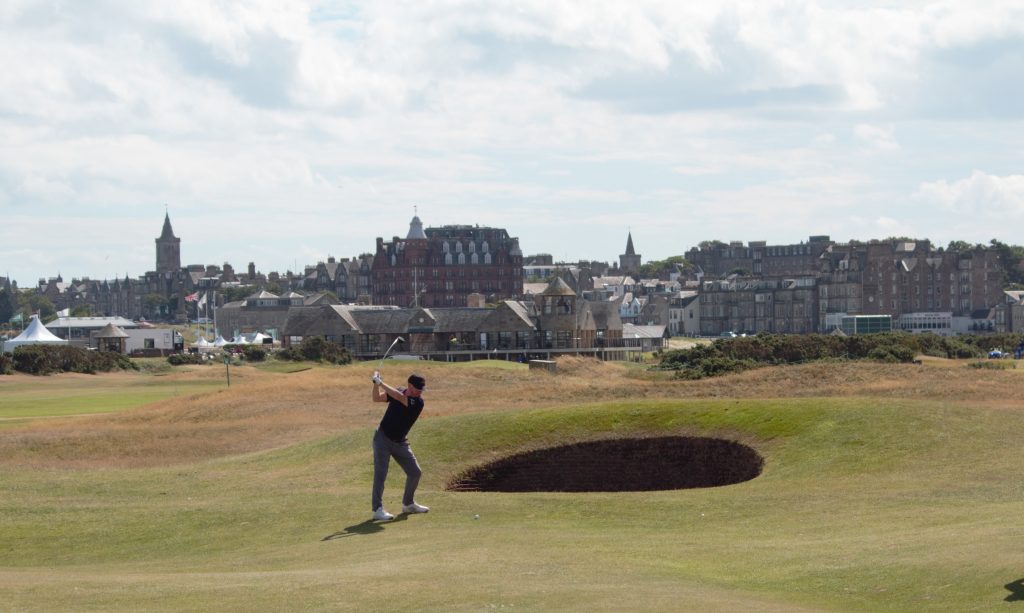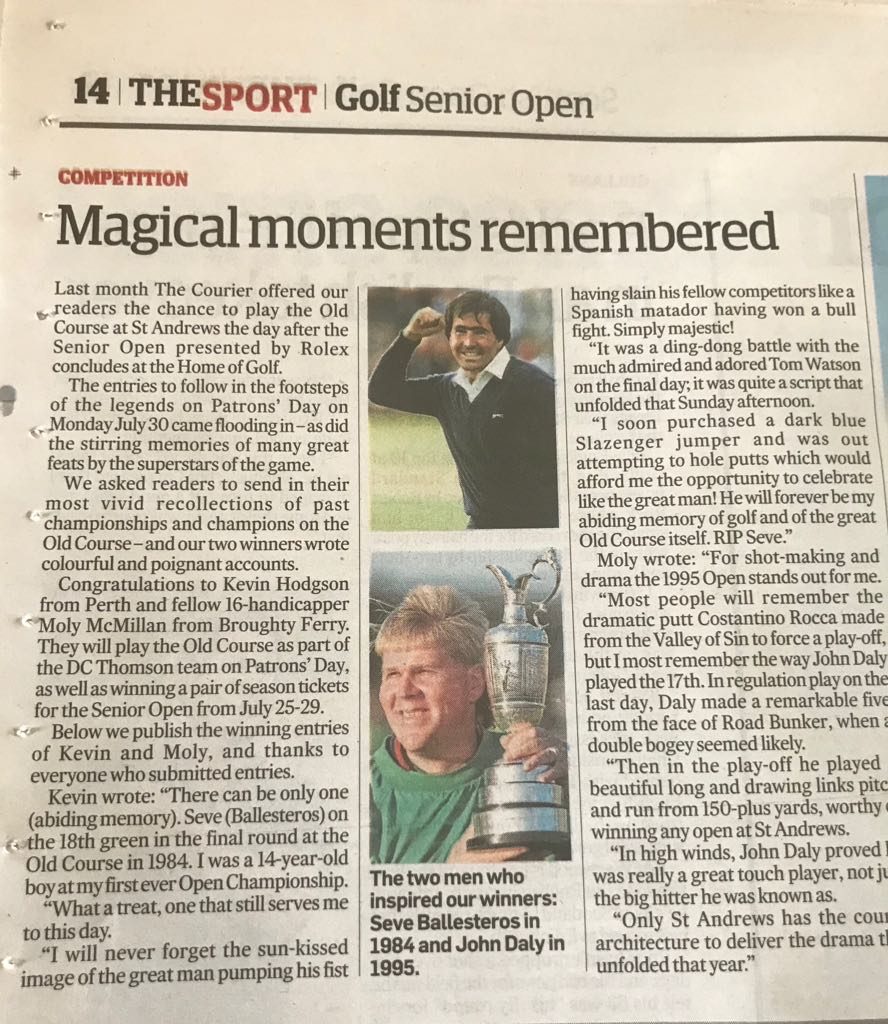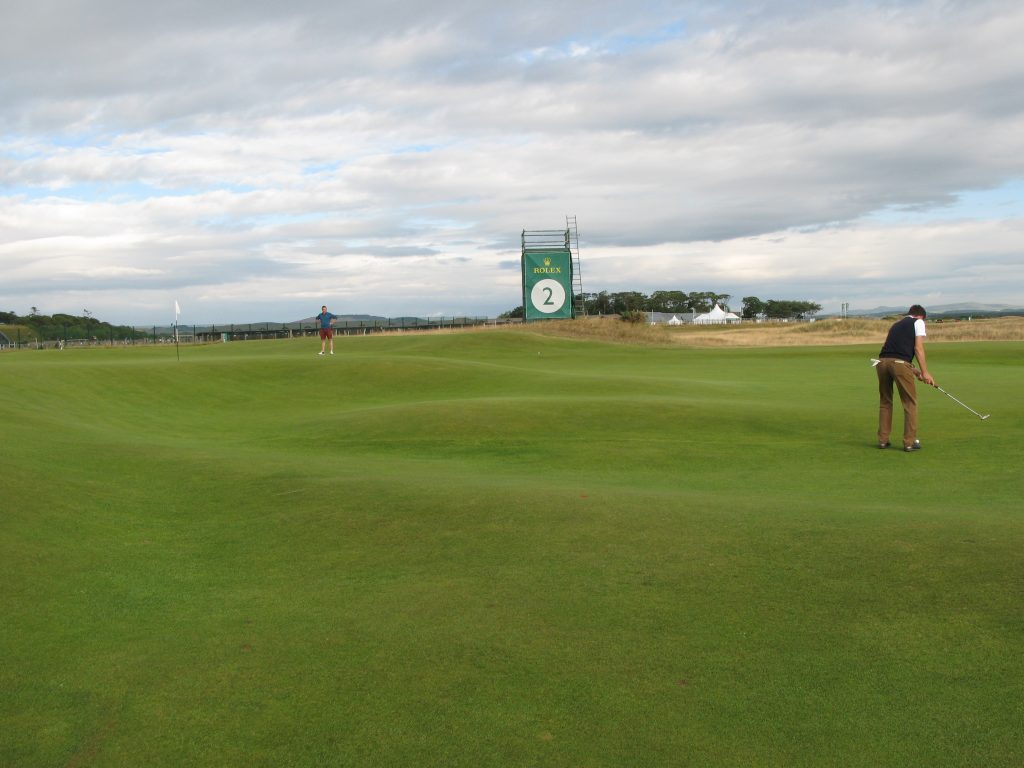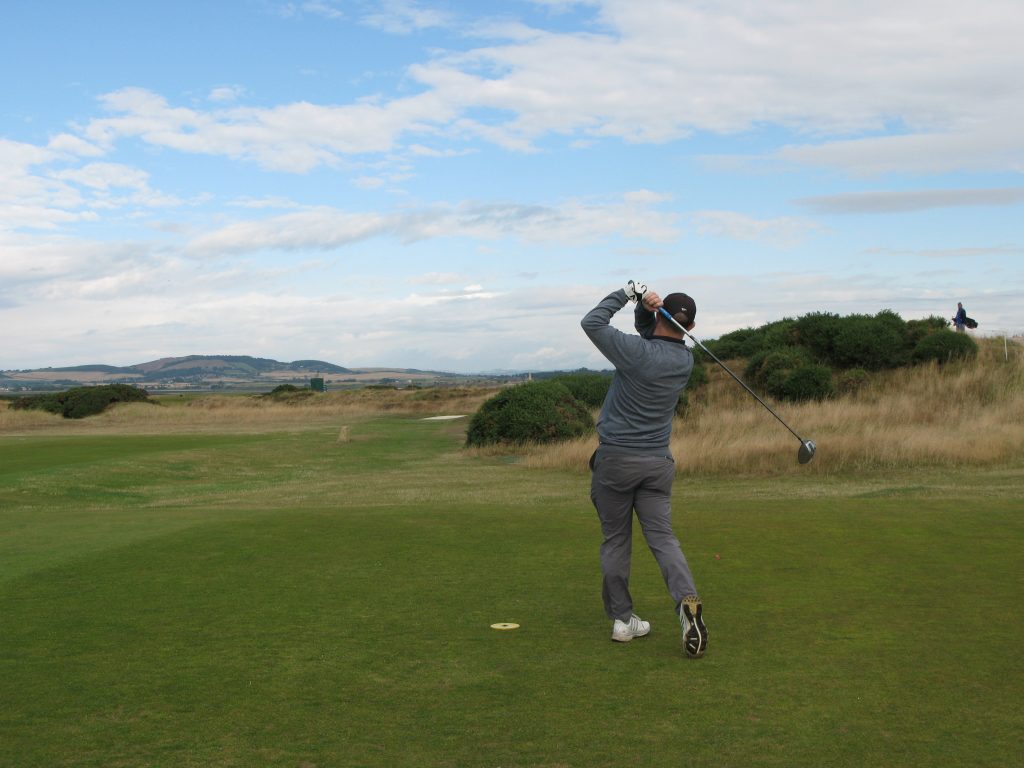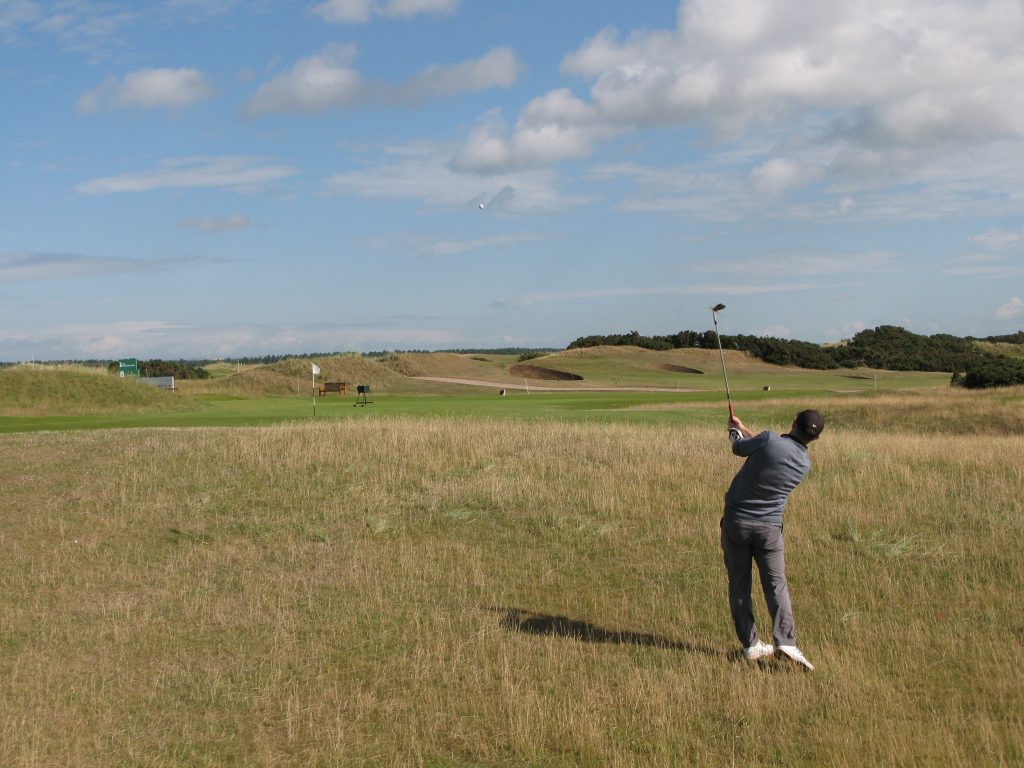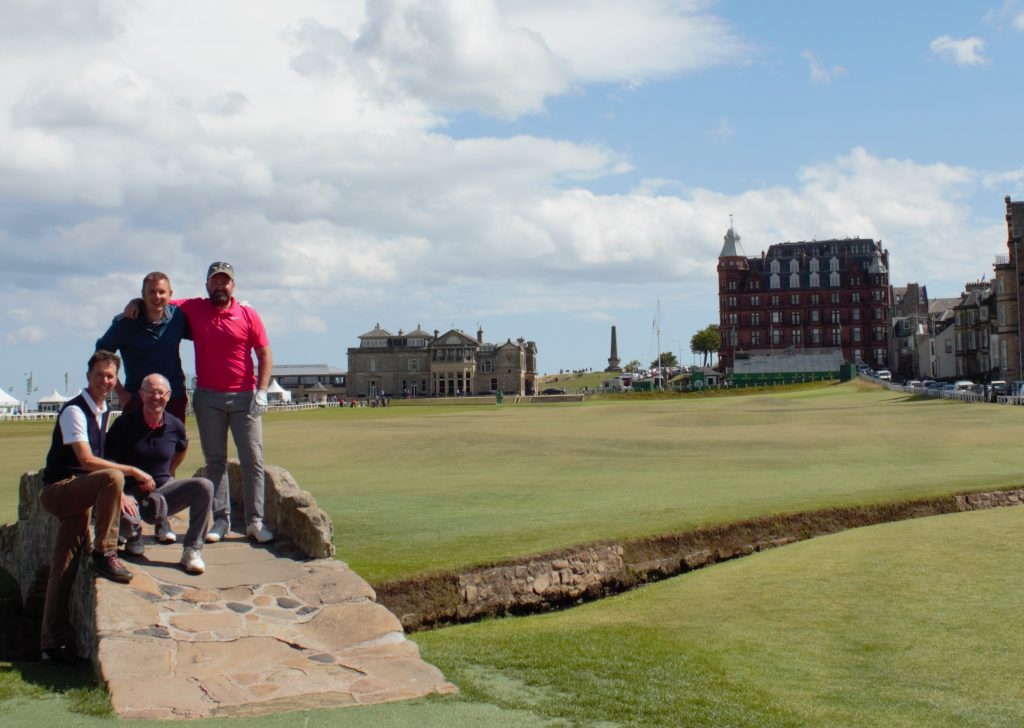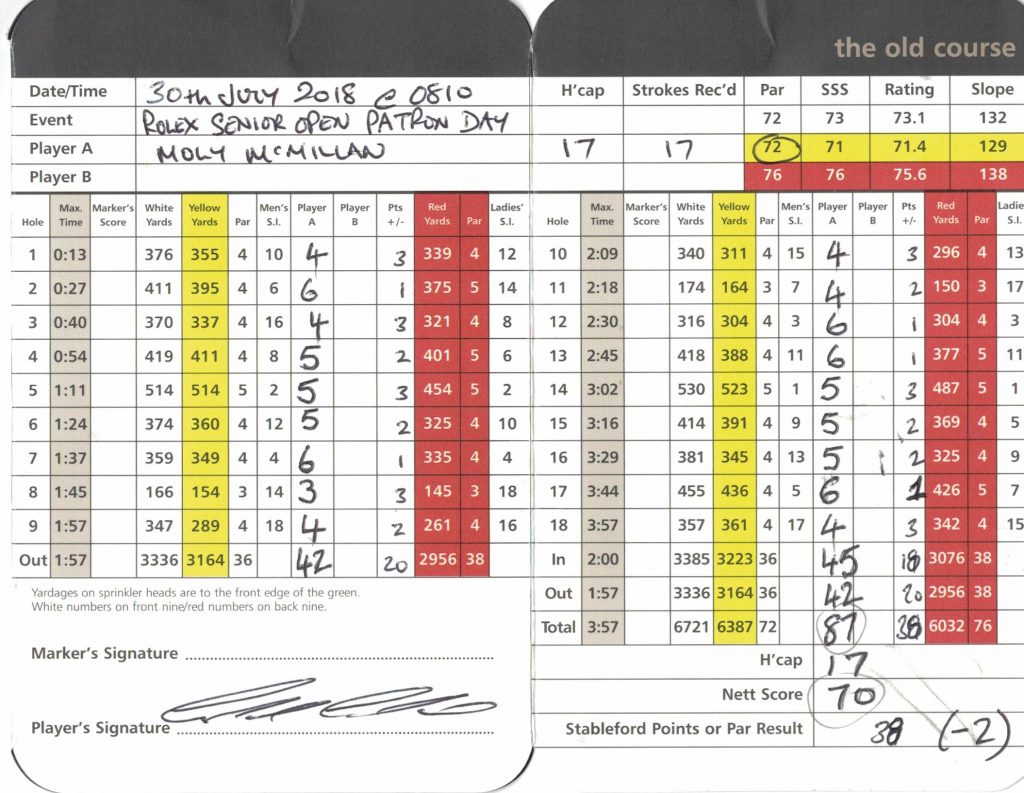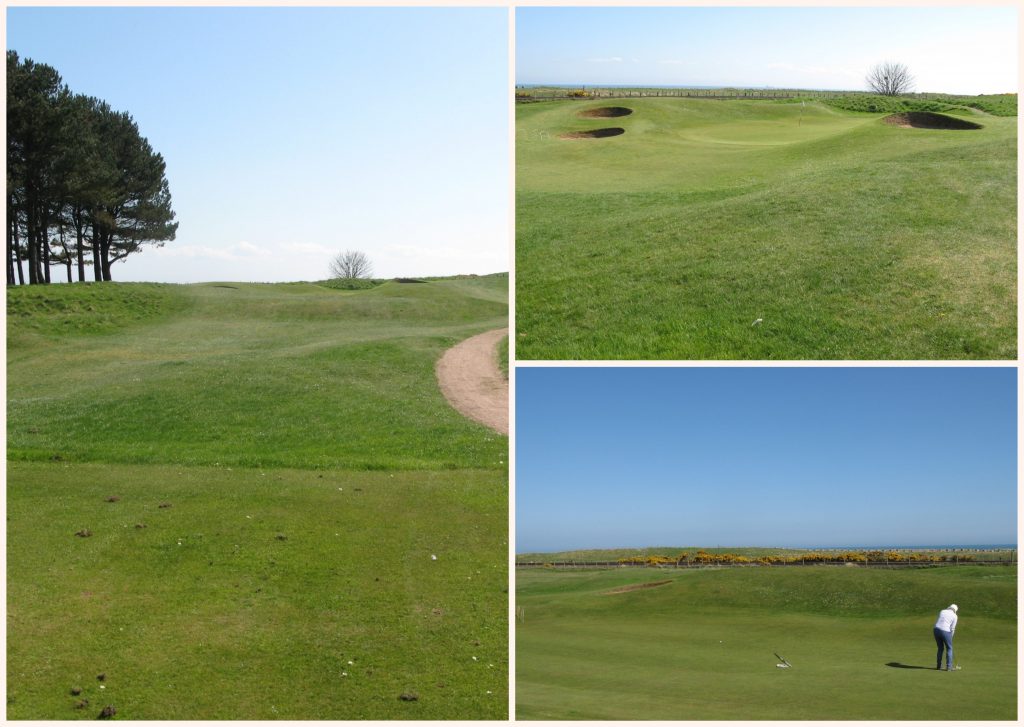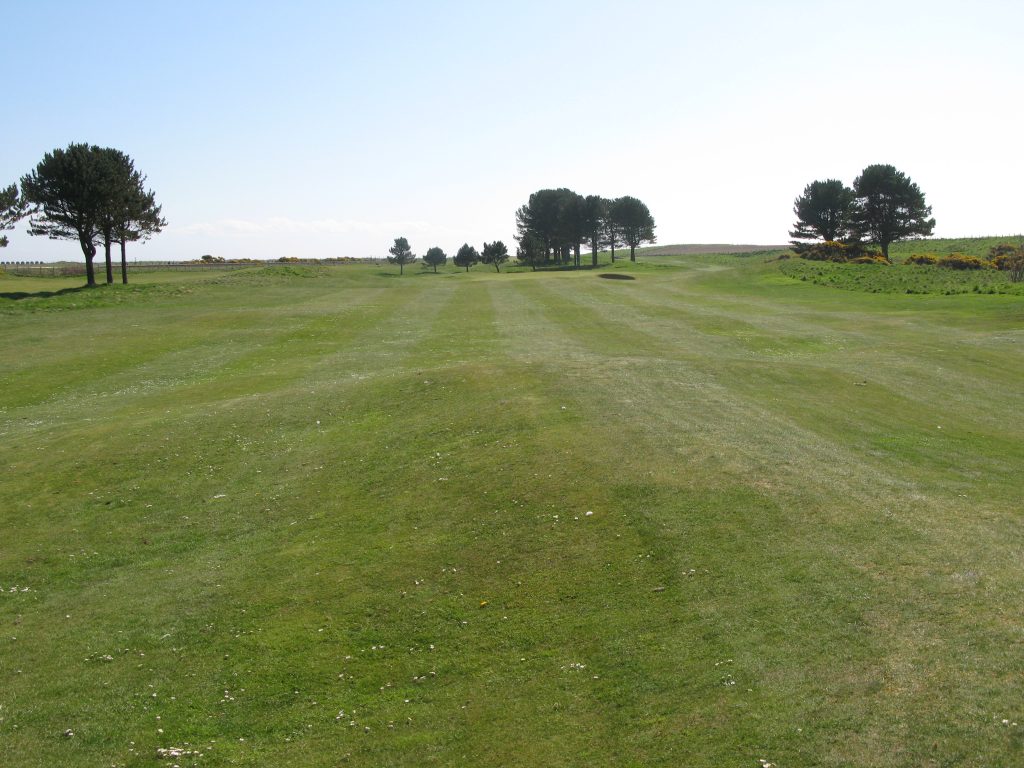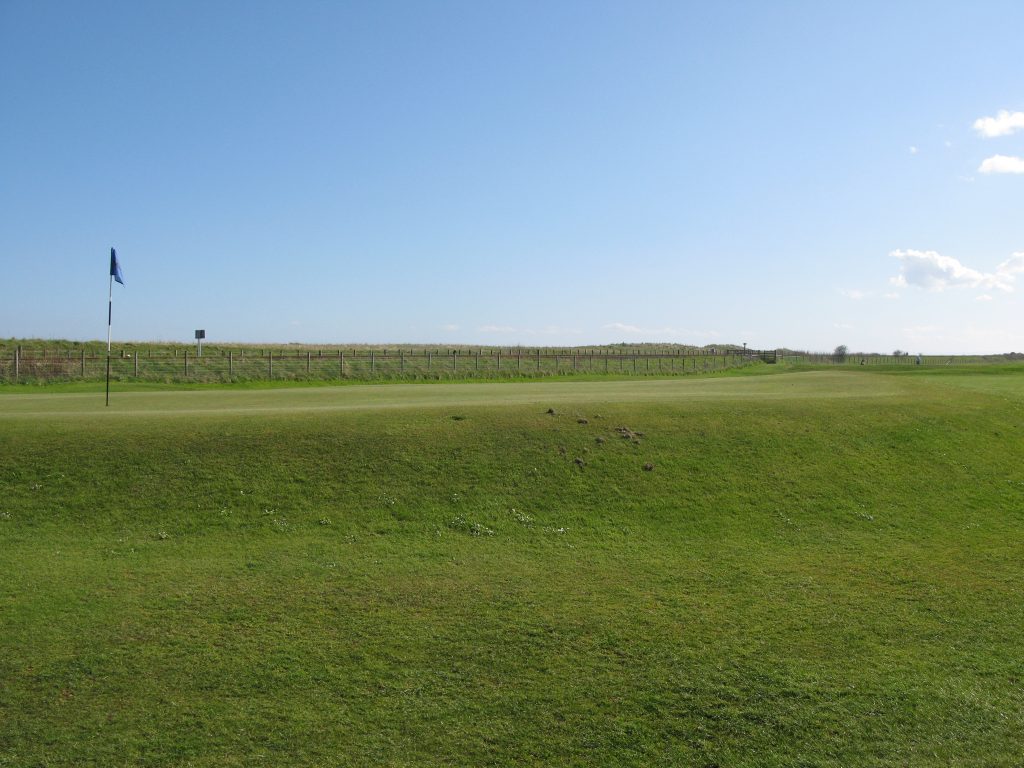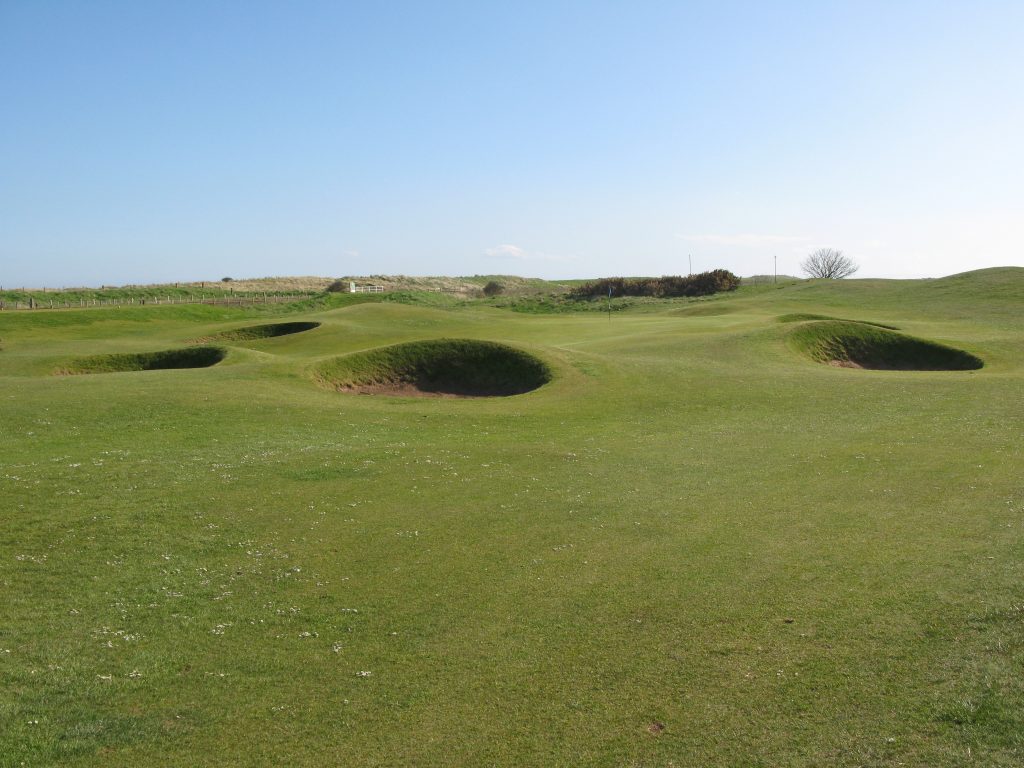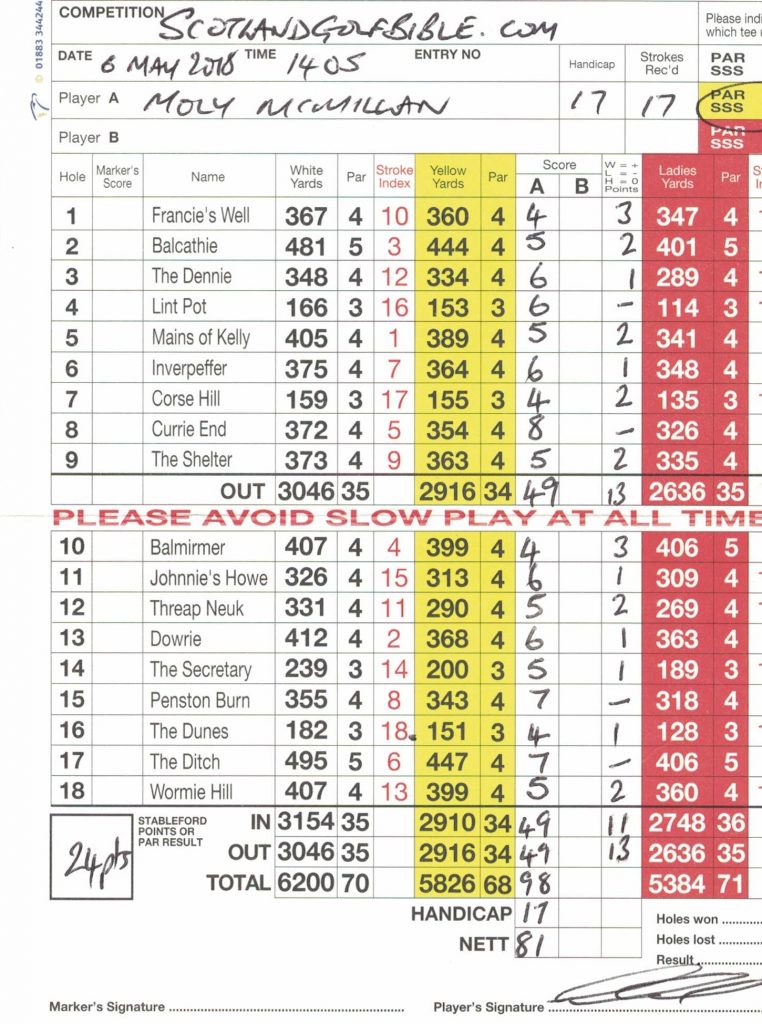The greens might be the firmest in Scotland – any fast bowling attack would like them!
Round £31. Par 65. Course Rating / Slope Rating (yellow) 63.2/103. Value (out of 5) – 4
When I played Winterfield golf course, on a blustery, but warm, late September day, certain questions and thoughts kept going through my mind:
- This is the most fun golf I’ve had in years.
- The West Indies fast bowing heroes of my youth could bowl on these rock hard greens!
- Tiger Woods couldn’t get near this pin – it’s impossible!
- This is mickey mouse golf!
- How can this be assessed as a 103 slope rating, with 4 par 3s well over 200 yards?
Winterfield golf course is located in Dunbar on the “golf coast” of East Lothian. Overshadowed by the magnificent Dunbar golf course, which is also known as the “East Links” course in Dunbar, Winterfield is close to the “West Links” area of Dunbar where golf is first recorded as being played in 1616. Therefore, there is arguably a greater historical story with Winterfield, albeit the course was only established by the local town council in 1935, without any note of the course designer in the club website.
The golf course sits on a beautiful piece of ‘links’ land around the fine clubhouse, called St Margaret’s House, which is home to the “Fairways” restaurant.
The 18 hole course is not long, at only 4817 yards from the yellow tees most visitors will use. However, the slope rating of only 103, belies the real challenge of the course. It has some of the toughest and long par 3s in the area, starting at the opening hole which is 224 yards long, over a long carry. It deserves the Stroke Index 3 rating. Play the first hole as if a par 4, and be happy with a bogie is my advice, as the holes 3 through 6 is the easiest stretch on the course and enable you to get under your handicap; the long par four 7th, SI 1, will challenge the best and has the most difficult green on the outward 9.

The back 9 is where the course presents the coastal challenges, with a number of the holes skirting Dunbar beach. No more so than at the aptly named “The Point”, the long par three 14th hole. With a very strong wind and fast running fairway I played a 9 iron (normally my 115 yard club) to the front of the green at the 192 yard hole! I four putted for a 5!
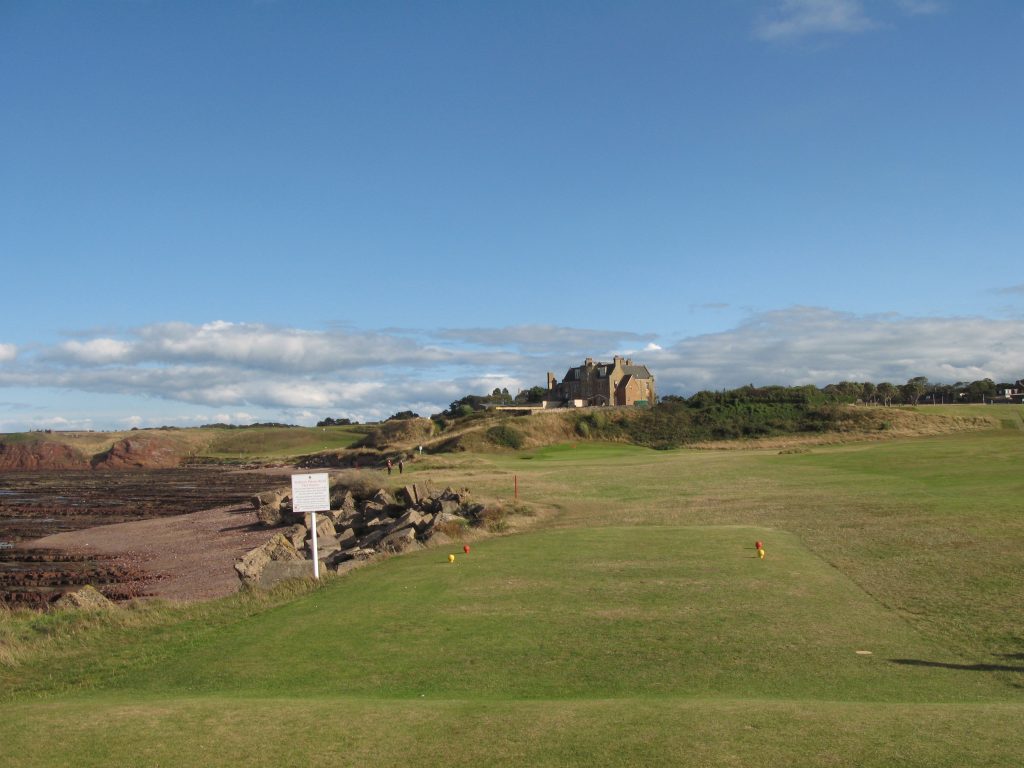
There are fantastic views views across the Firth of Forth towards The Kingdom of Fife, with the Bass Rock headlining the vistas. It is a nice walk for any non playing partners.
If you want a low cost links experience and challenge, in non stuffy surroundings, Winterfield is an ideal venue. But this is no easy holiday golf course and only the very top golfers will par many more than half of the par 3s on this course. The club also boast of a number of members who went on to play top amateur or professional golf.
I felt I played well for my 88, which although 10 over net, was 30 stableford points. The greens were treacherous; very dry and fast, impossible to get any check spin on. The positions of the pins were also very difficult. The green side bunkering is also pretty tricky, and you should try and navigate away if you can.
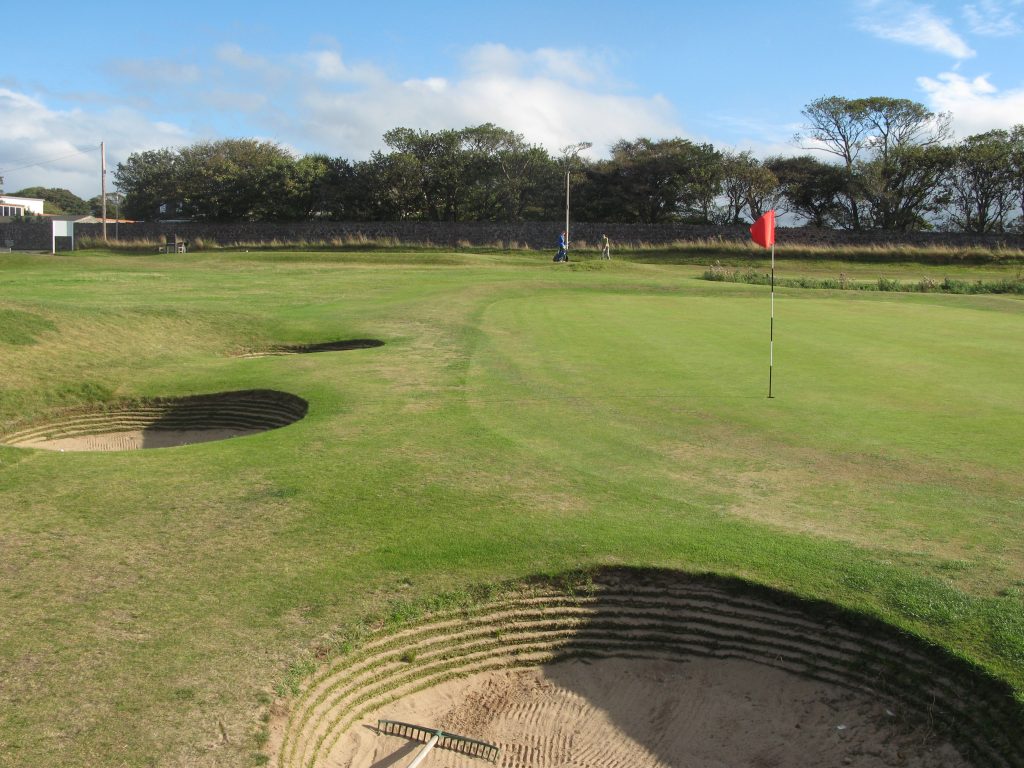
In summary, don’t be fooled by the slope index, which I imagine will adjust higher after several years data is compiled. I think if felt more like a 115 course.
Great value golf, but the hard greens devalue it a bit, hence only 4 rather than 5 for value.
Course Type: Links
Par 65 (1 par 5s, 9 par 4s, 8 par 3s)
Distance: 4817 (yellow)
Moly’s Gross score: 88
